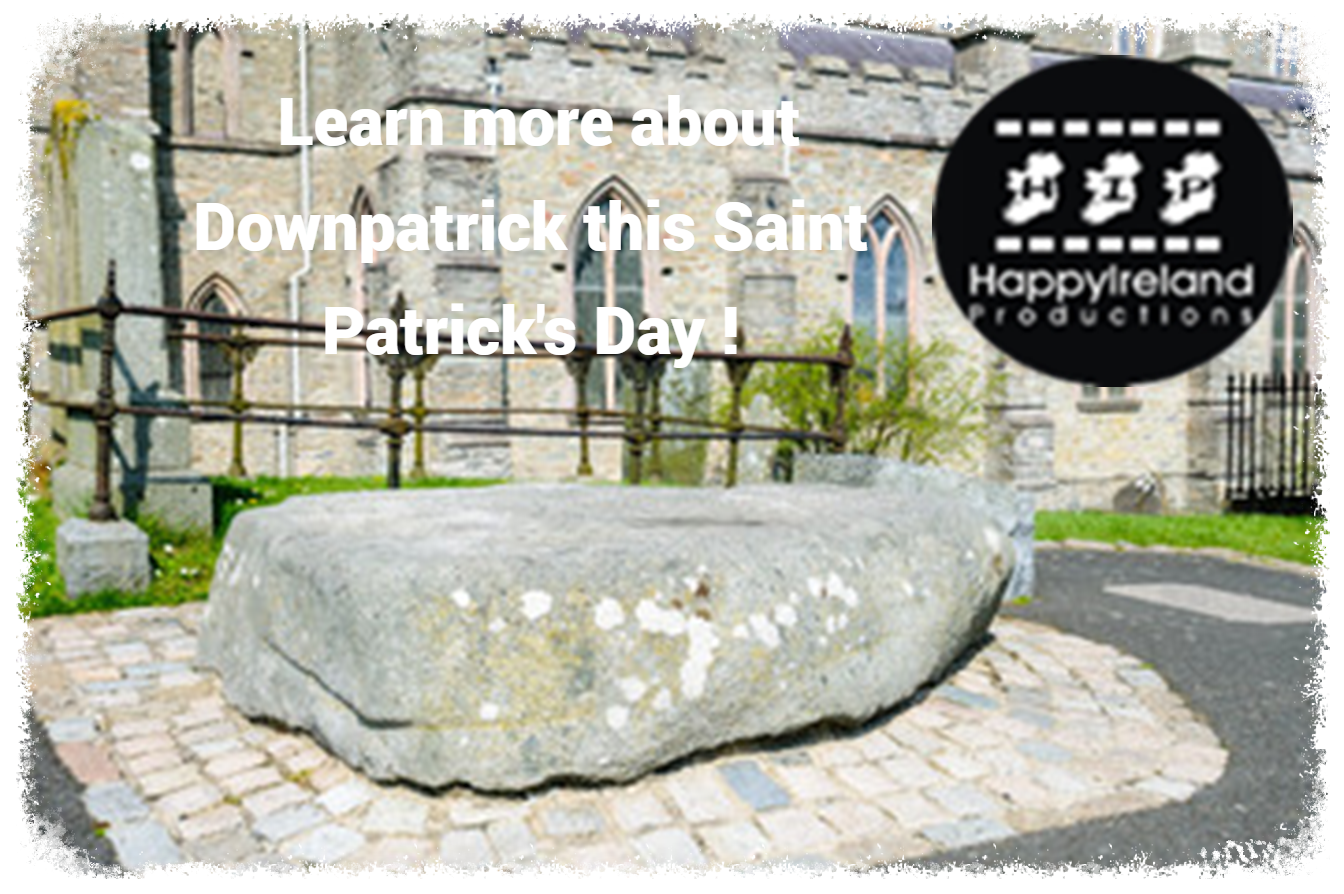Learn More about the history of Downpatrick this Saint Patricks day
Learn More about the history of Downpatrick this Saint Patricks day
Legend has it that in the fifth century, Saint Patrick was buried in the Hill of Down in Downpatrick, Northern Ireland. On top of the hill has been a cathedral since the 12th century.
The church was repeatedly destroyed, left in ruins over the course of centuries due to shifting religious and political currents. The remains of Saint Brigit and Saint Columba were purportedly gathered and interred on the hillside with those of Saint Patrick by the Anglo-Norman knight John de Courcy. Downpatrick has served as a destination for numerous religious pilgrimages for more than 1,600 years.
Early in the 20th century, a sizable granite block was erected to prevent pilgrims from taking soil from the sacred spot. The name “Patrick” and the image of a Celtic cross are engraved on the boulder. A Celtic cross from the 10th or 11th century is present close by.
Today, the historic and spiritual heart of Downpatrick is the Down Cathedral, also known as the Cathedral of the Holy and Undivided Trinity. The Saint Patrick Centre, located nearby at the base of the hill, offers visitors the opportunity to learn more about the life of St. Patrick at the only permanent exhibit in the world devoted to Ireland’s most well-known saint.
DOWNPATRICK and COUNTY DOWN RAILWAY; Built on the track bed of part of the Belfast and Co.Down Railway, the old line was closed and abandoned nearly 60 years ago. However volunteer enthusiasts have laid nearly three miles of track to create Ireland’s only full sized heritage railway. Steam locomotives from the 1920’s and 1930’s, or diesels from the 1960’s, convey their passengers in 50 or to 100 year old carriages pass rebuilt railway buildings and into the Co. Down countryside.
You can also check out the new Carriage Gallery which displays the railway’s exhibits.
r came into possession of the premises. ; The small 13 bedroomed hotel was built in 1641 as a Coaching Inn. A Royalist soldier, John McGreevy, was paid off by Charles 1 and he and his wife Anne were given permission to build a house on the present site to dispense ale and liquor. Nearly 370 years later his monogram can still be seen on a plinth in one of the wings. It was in 1870 that Robert Denver, a local farmer came into possession of the premises. , The most famous visitor was The Irish liberator, the uncrowned king of Ireland – Dan’O’Connell who stayed there in July 1830 and even spoke to the crowds from one of the windows. The Duke of Kent was also reported to have been a visitor in 1941. The hotel also had the privilege of being a debtor’s retreat – in the inner yard there was a space where debtors could not be arrested.
More from Happy Ireland
If you enjoyed this blog, click here to view more from us!
With Happy Ireland Productions, you can preserve your memories to last forever. Visit one of our partners to drop off your assortment of tapes, film, pictures and audio keepsakes. You’ll receive your DVD or digital copy with the original. Simple and Safe!
We can work with all sorts of media. From video tape transfers and film processing to cine film conversion. Browse our full list services.
Your memories are priceless so why risk losing them.
Learn more about Happy Ireland Productions or Contact us for any inquiries
